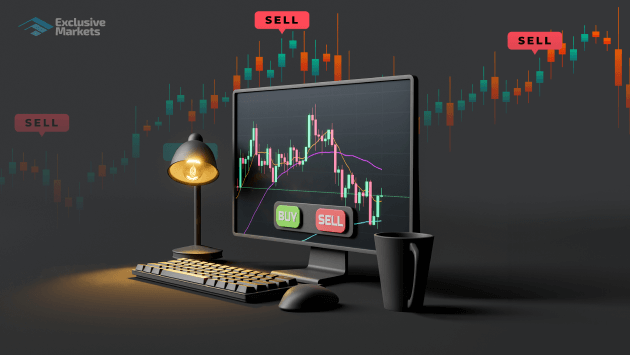
When it comes to forex trading, utilizing effective indicators can significantly enhance your trading strategy. Understanding the various indicators available, combined with a well-thought-out approach to analysis, can help traders capitalize on market movements. Whether you’re a novice or a seasoned trader, learning about the best indicators can provide you with an edge in the competitive forex landscape. For traders exploring these tools, a reliable best indicators for forex trading Trading Platform VN can further support your endeavors.
Understanding Forex Indicators
Forex indicators are mathematical calculations based on the price, volume, or open interest of a currency pair. These indicators help traders analyze market trends, recognize potential trading opportunities, and ultimately make informed decisions about when to enter or exit a trade. They can be divided into various categories: trend indicators, momentum indicators, volatility indicators, and volume indicators. Each category serves a unique purpose and can be used in combination to develop a more robust trading strategy.
1. Moving Averages
One of the most commonly used forex indicators is the Moving Average (MA). Moving averages smooth out price data to create a trend-following indicator. They help traders identify the direction of the trend—whether it’s upward or downward. The two most used types are the Simple Moving Average (SMA) and the Exponential Moving Average (EMA). While the SMA provides an average over a defined period, the EMA gives more weight to recent prices, making it more responsive to price changes.
How to Use Moving Averages
Traders often use moving averages to spot potential entry and exit points. A common approach is to watch for crossovers, where a shorter-term moving average crosses above or below a longer-term moving average. When the shorter MA crosses above the longer, it indicates a potential buy signal, and vice versa for sell signals.
2. Relative Strength Index (RSI)
The Relative Strength Index (RSI) is a momentum oscillator that measures the speed and change of price movements. It ranges from 0 to 100, indicating whether an asset is overbought or oversold. Generally, an RSI above 70 suggests that a currency pair is overbought, while an RSI below 30 indicates it is oversold.
Using RSI in Trading
Traders often employ the RSI to identify potential reversal points. For instance, if a currency pair’s RSI rises above 70, it could indicate a potential sell opportunity. Conversely, if it drops below 30, it may signal a buying opportunity. Additionally, RSI divergences—when the price moves in the opposite direction of the RSI—can also point to potential reversals.
3. Bollinger Bands
Bollinger Bands are a volatility indicator that consists of a middle band (SMA) and two outer bands that represent standard deviations away from the moving average. The bands expand and contract based on market volatility, making them an excellent tool for assessing price movements and potential breakouts.
How to Trade with Bollinger Bands
Traders use Bollinger Bands to identify potential overbought or oversold conditions. When the price touches the upper band, it may indicate overbought conditions, while touching the lower band can indicate oversold conditions. Additionally, when the bands narrow, it may signal an upcoming volatility spike or breakout.

4. MACD (Moving Average Convergence Divergence)
The MACD is a trend-following momentum indicator that shows the relationship between two moving averages of a security’s price. The MACD is calculated by subtracting the 26-period EMA from the 12-period EMA. The result is the MACD line. Additionally, a nine-day EMA of the MACD called the “signal line” is plotted above the MACD line, helping traders identify potential buy and sell signals.
Interpreting MACD Signals
Traders look for crossovers between the MACD line and the signal line, which can indicate potential buying or selling opportunities. A crossover of the MACD line above the signal line can signal a bullish trend, while a crossover below indicates a bearish trend. Additionally, MACD histogram bars can provide insights into the strength of the trend.
5. Fibonacci Retracement Levels
Fibonacci retracement levels are used to identify potential reversal levels based on the Fibonacci sequence. Traders commonly use these levels as potential support and resistance zones. Key Fibonacci levels include 23.6%, 38.2%, 50%, 61.8%, and 100% retracement levels.
Applying Fibonacci in Trading
Fibonacci retracement is often applied to identify potential reversal points during a pullback in a trend. After establishing a significant price movement, traders mark the key Fibonacci levels on their charts. Price reactions around these levels can provide vital insights into potential trade entries or exits.
6. Stochastic Oscillator
The Stochastic Oscillator is another momentum indicator that compares a currency pair’s closing price to its price range over a specified period. The oscillator ranges from 0 to 100 and is typically plotted with two lines: %K and %D. These lines indicate overbought and oversold conditions.
Using Stochastic Oscillator in Trading
Similar to RSI, traders often look for overbought or oversold signals from the Stochastic Oscillator. Values above 80 indicate overbought conditions, while values below 20 indicate oversold conditions. Signals can also be derived from crossovers of the %K and %D lines.
Combining Indicators for a Robust Strategy
While each of the indicators mentioned can be powerful individually, combining them can provide a more comprehensive trading strategy. For instance, a trader might use moving averages to establish the broader trend while applying the RSI and Stochastic Oscillator to find optimal entry and exit points. Similarly, incorporating price action analysis can give additional confirmation to the signals generated by these indicators.
Conclusion
In the fast-paced world of forex trading, having access to the best indicators can enhance your trading decisions significantly. Whether you choose to focus on trend indicators like Moving Averages or momentum indicators like RSI and MACD, understanding how to use these tools effectively can set you on a path toward greater trading success. Always remember to test and adapt your strategy based on your trading style and market conditions. Happy trading!


Write a comment: